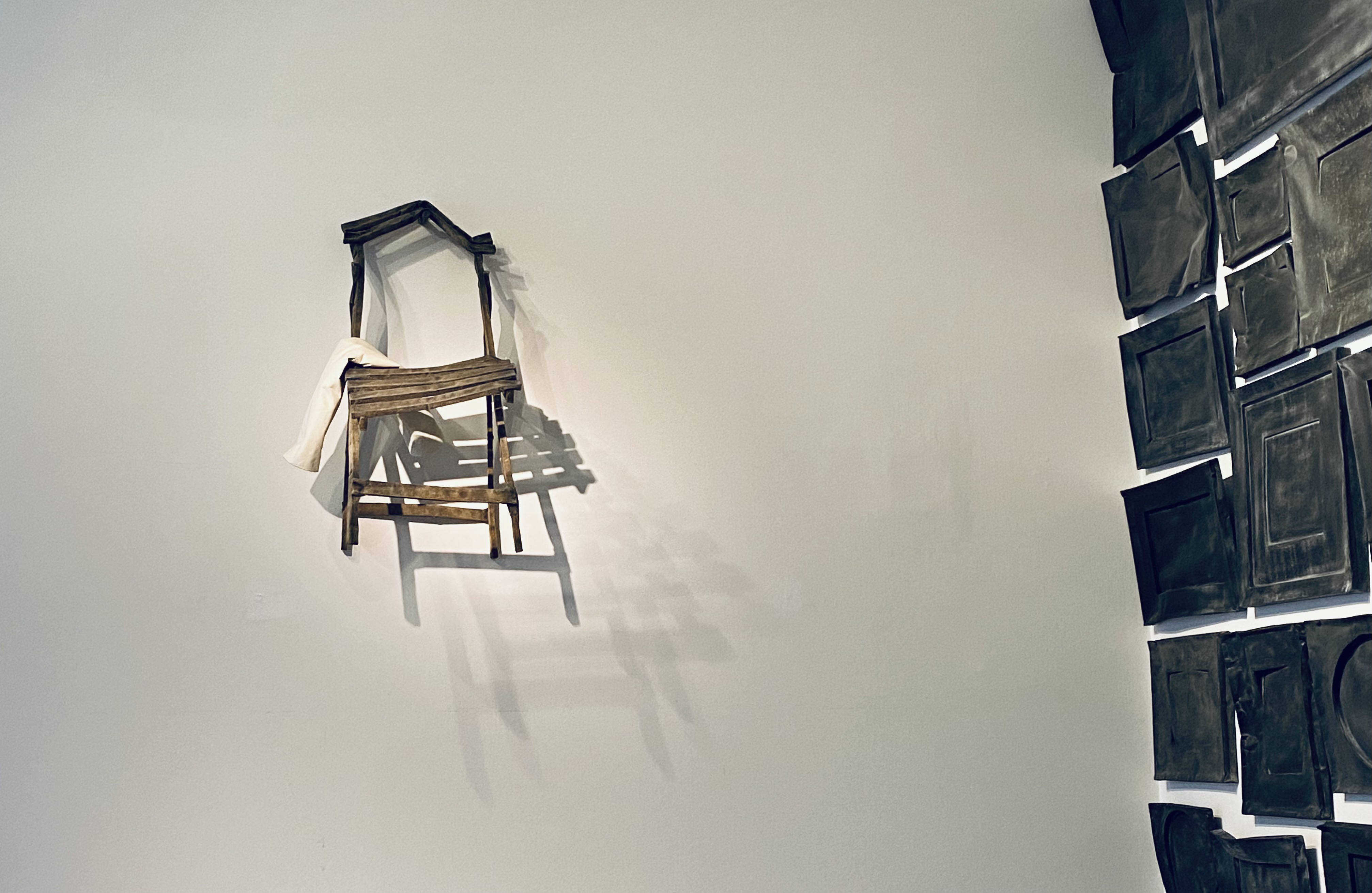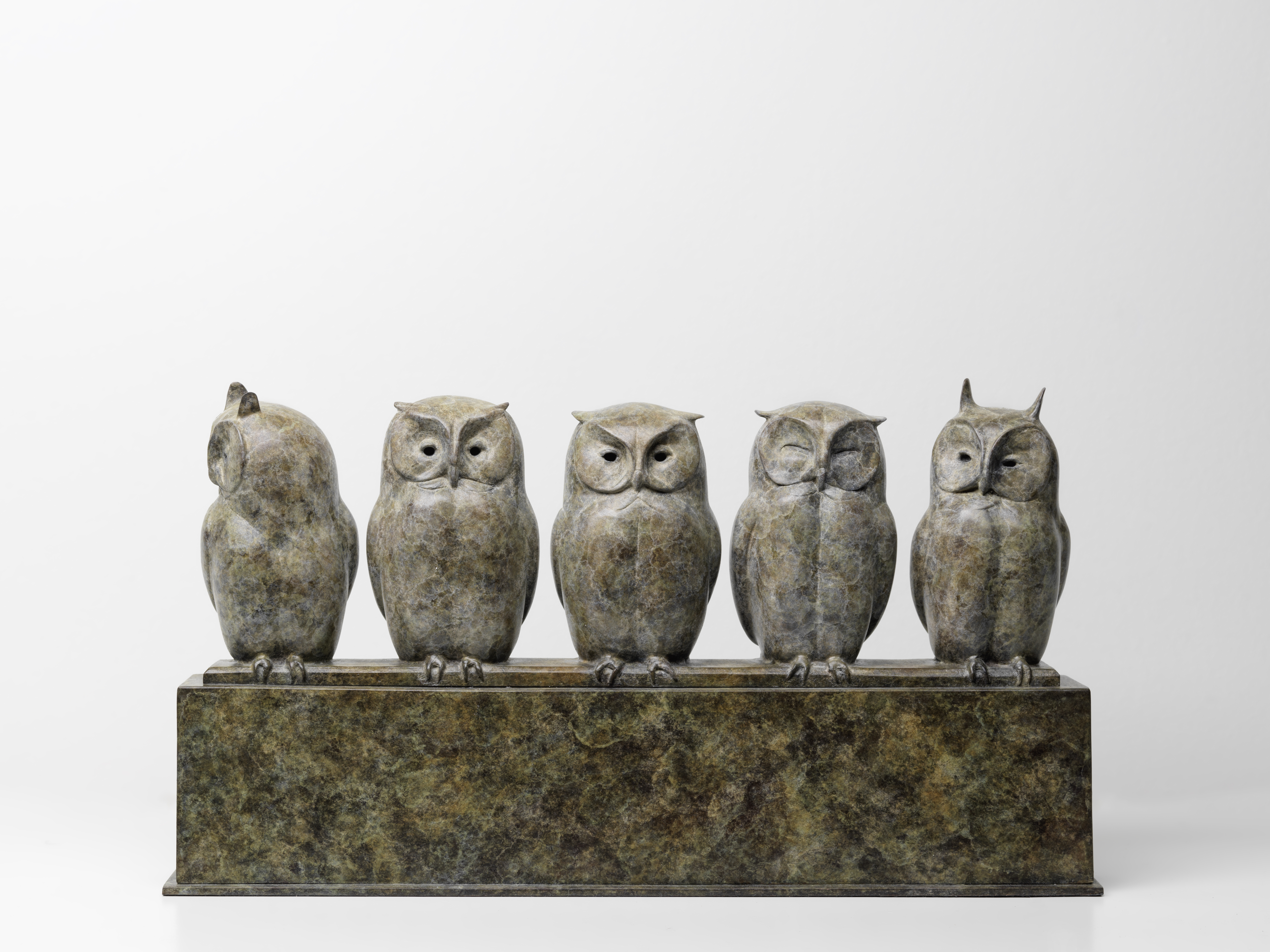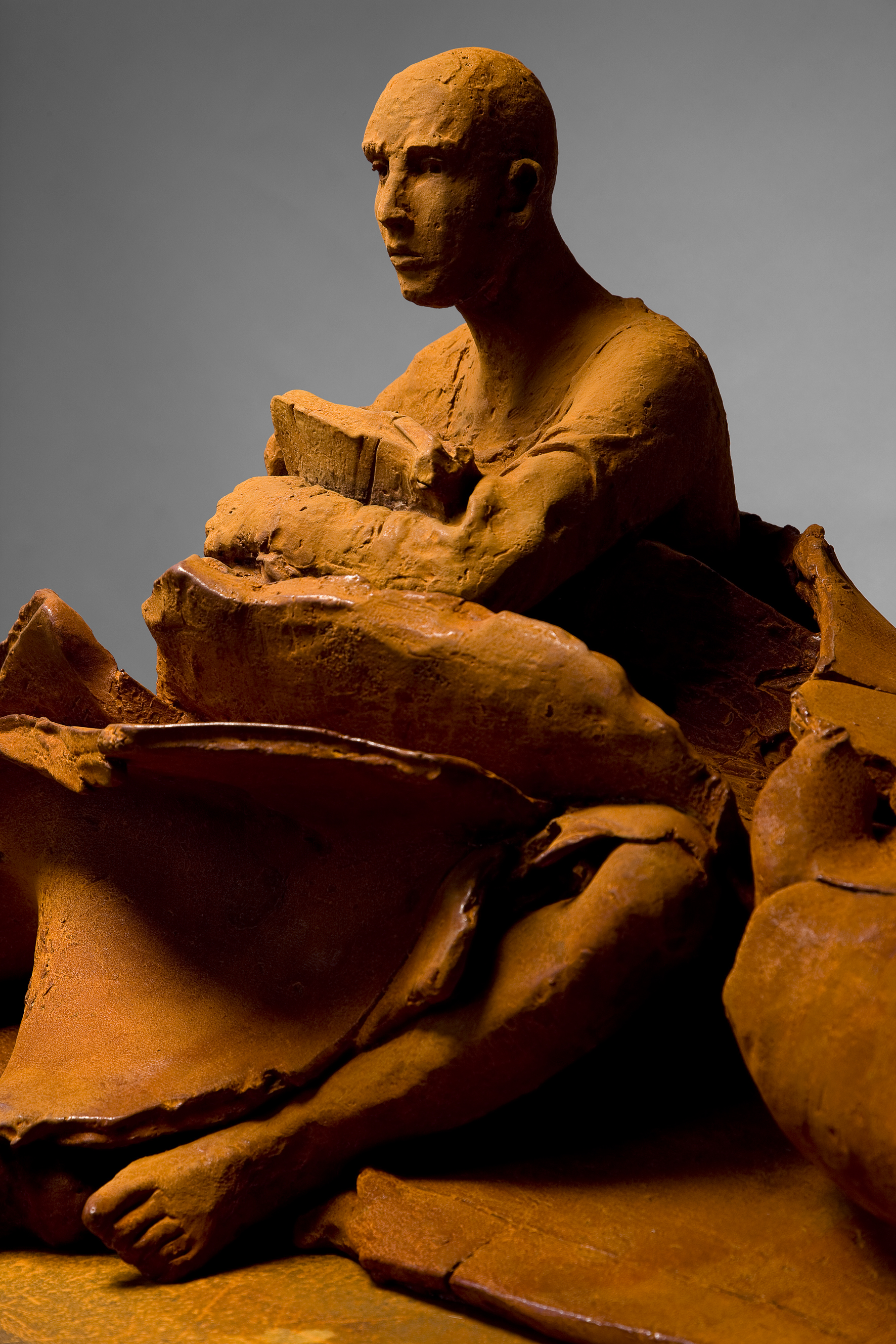During this winter exhibition, FRANCIS MAERE FINE ARTS GALLERY presents a fine collection of paintings from 1890 - 1930 in combination with three contemporary artists, Johan De Wit,
Jonathan Knight and Hanneke Beaumont.
JOHAN DE WIT (1960°)
Johan De Wit's creations often refer to classics from art history from Antiquity to the present. The works evoke traditional themes such as landscapes, still lifes and genre pieces. In addition, they also play on the conventional philosophic-religious themes: the insignificance and fragility of human existence, the ephemeral, futile and ludicrous of power and flamboyance, the pleasure and fleetingness of earthly pleasures.
The artworks are made of paper, reinforced with resins and enriched with iron powders and pigments. The artist's technique is astounding, is subservient, but does not want to overwhelm us. Most of the works seem to refer to something in reality and not at the same time, which confuses the viewer. There is melancholy and heaviness in the air, but also humor, comfort and care. De Wit leaves thinking open and exposes feeling. His work is gripping. (KDC)

JONATHAN KNIGHT (1954°)
Jonathan Knight finds himself, as it were, at the crossroads between two worlds. He shares the smooth, abstracting presentation of Pompon with the inspiration and power of Bugatti. A touch of humour is also not strange to Knight, without lapsing into caricatures.
Like many other artists, Jonathan Knight has also abandoned the traditional manner of patinating. Since the early 1990s, he has continuously experimented with acids and their effect on the heated bronze surface.
This creates often surprising effects that fluctuate between chance and control, which certainly contribute to the originality and creativity of his works. Above all, Jonathan Knight has the gift to express the inner nature of the animal, often in very small details.

HANNEKE BEAUMONT (1947°)
Many of her figures appear neither male nor female, neither young nor old. Physically, they are approximations of human beings and as such they provide a way to remotely consider general ideas about the nature of the human race. Fragile but strong, immovable but ready to move, these figures seem to be in weightless spatial equilibrium - their human nature tied to a series of thoughts.
In recent years, Hanneke Beaumont has been experimenting with a new material.
After years of work and experience with the materials terra cotta and bronze, Hanneke discovered cast iron. She thought it suited her work and what she wanted to express with it. Like terra cotta, it is strong but also fragile at the same time, a theme that is common in her images.
